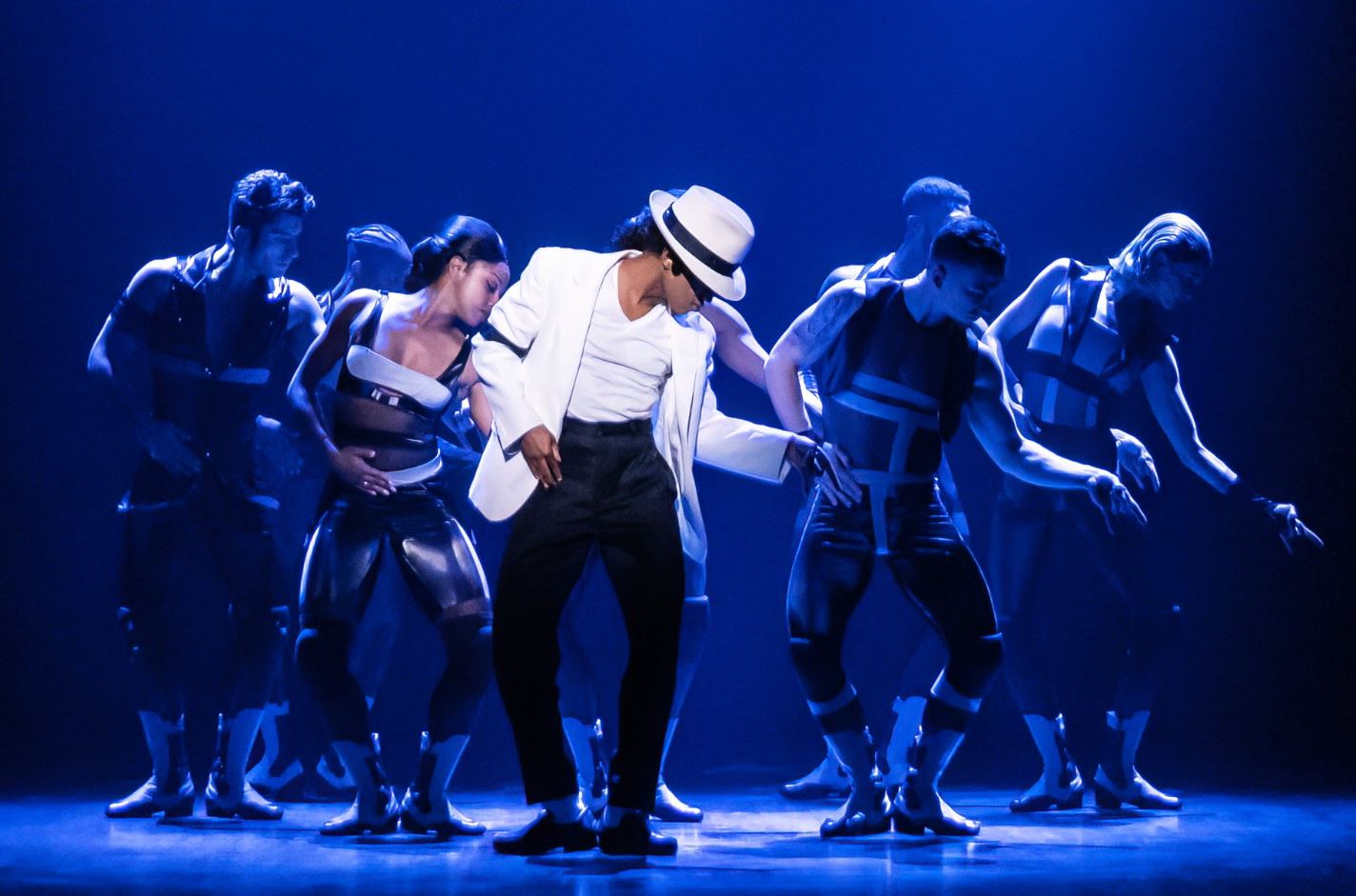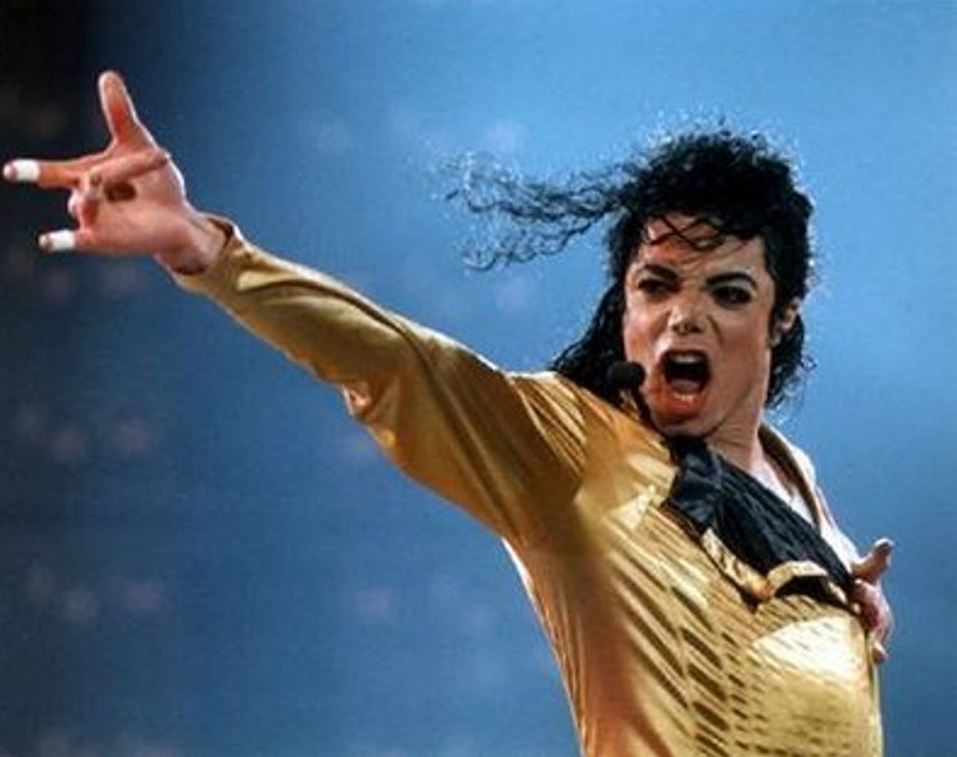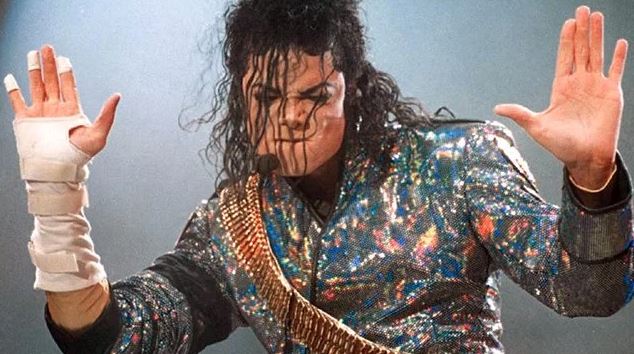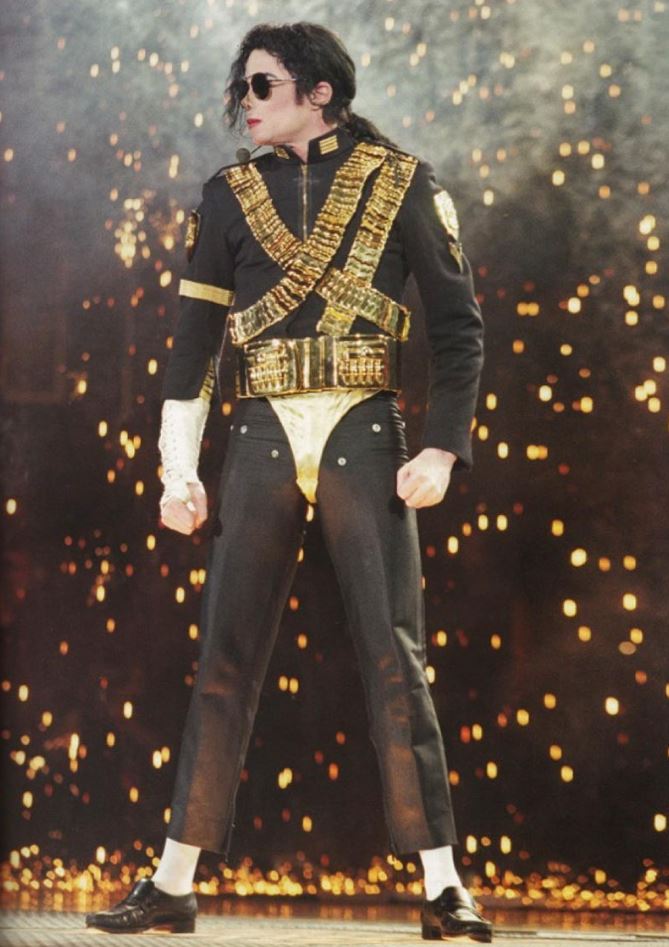The Dangerous World Tour, Michael Jackson’s monumental second global concert tour, was not just a showcase of his unparalleled musical talent but also a platform for philanthropy. Launched to promote his eighth studio album, “Dangerous,” the tour marked a significant phase in Jackson’s career, highlighting his evolution as both an artist and a humanitarian. Sponsored by Pepsi-Cola, this tour stood out not only for its breathtaking performances but also for its commitment to social causes.
Jackson’s decision to donate all profits from the tour to various charities, including his own “Heal the World Foundation,” was a testament to his dedication to making a positive impact on the world. The foundation, which focused on providing aid to children and the environment, benefited greatly from the tour’s proceeds. This move set a precedent for celebrity involvement in charitable activities and was a significant part of Jackson’s legacy as an artist who used his influence for the greater good.
The tour itself was a spectacle of high-energy performances and technical innovation, selling out stadiums across the globe. It began on June 27, 1992, in Munich, Germany, and spanned over a year, concluding on November 11, 1993, in Mexico City. Jackson’s ability to draw massive crowds was unmatched, and the tour’s success was a clear indicator of his global appeal and the powerful message he brought to the stage.
By integrating his musical journey with charitable efforts, Michael Jackson’s Dangerous World Tour did more than entertain; it inspired change and contributed significantly to various causes, making it a landmark event in the history of music tours.
| Tour Name | Dangerous World Tour |
|---|---|
| Purpose | Promote the “Dangerous” album, showcase musical talent, and support charitable causes |
| Sponsor | Pepsi-Cola |
| Charity Involvement | All profits donated to various charities, including “Heal the World Foundation” |
| Start and End Dates | June 27, 1992 – November 11, 1993 |
| Locations | Began in Munich, Germany and concluded in Mexico City |
| Impact | Inspired change and contributed to various causes; marked a significant phase in Jackson’s career as an artist and humanitarian |
Contents
Background and Preparation
After the monumental success of the “Bad” tour, which marked Michael Jackson’s first solo concert tour, the pop icon found himself at a pivotal point in his career. The “Bad” tour, which concluded in 1989, had grossed over $125 million and solidified Jackson’s status as a global superstar. Despite this overwhelming success, Jackson initially expressed a reluctance to embark on another tour, preferring to focus on creating albums and films. This period was crucial as it reflected his deep introspection about the impact of his fame and the direction he wanted his career to take.

The announcement of the Dangerous World Tour was a major media event, symbolizing Jackson’s return to the global stage. On February 3, 1992, at a press conference held at the iconic Radio City Music Hall in New York City, Jackson, alongside representatives from Pepsi, which sponsored the tour, unveiled the plans for what would become one of the most significant musical events of the early 1990s. The event, attended by over 200 journalists and insiders, was not just a tour announcement but a statement of Jackson’s continued relevance in the pop music industry.
Michael Jackson’s rationale for launching the Dangerous World Tour was multifaceted. Beyond the typical promotional activities for his album “Dangerous,” Jackson was deeply committed to using the tour as a vehicle for philanthropy. At the press conference, he expressed a heartfelt desire to use the tour’s proceeds to support his newly formed “Heal the World Foundation.” His aim was to raise $100 million for the charity by Christmas 1993. Jackson envisioned the tour as a means to visit children around the world and to spread a message of global love and environmental responsibility, showcasing his growing concern for humanitarian issues.
| Event | Transition from “Bad” tour to “Dangerous World Tour” |
|---|---|
| Background | “Bad” tour concluded in 1989, grossing over $125 million, elevating Jackson as a global superstar. |
| Initial Reluctance | After “Bad” tour, Jackson preferred focusing on albums and films, reflecting on his career direction and fame impact. |
| Dangerous Tour Announcement | Unveiled on February 3, 1992, at Radio City Music Hall, New York City, sponsored by Pepsi, attended by over 200 journalists. |
| Philanthropic Goals | Aimed to raise $100 million for “Heal the World Foundation” by Christmas 1993, promoting global love and environmental responsibility. |
Tour Development Via Video
The logistical challenges of organizing a tour of such magnitude were immense. In June 1992, Jackson’s team initially booked a Russian Antonov AN-124 cargo jet, the world’s largest airplane at the time, to transport the stage equipment from Los Angeles to London for the start of the European leg. However, issues with its civilian aircraft certification led to a last-minute change, requiring the team to switch to a Boeing 747 operated by Federal Express. This plane carried the vast array of stage equipment necessary for the elaborate performances planned across the tour’s itinerary.
The transport logistics were a massive undertaking, involving 65 lorries to move equipment across Europe, including 1,000 lights, 10 miles of electrical cable, nine video screens, and 168 speakers. The tour was a showcase of technical prowess, aiming to create a spectacle that was visually stunning and sonically overwhelming.
The stage design and costumes for the Dangerous World Tour were critical elements that contributed significantly to the visual and emotional impact of the performances. Michael Bush and Dennis Tompkins, who had worked with Jackson on previous projects, were tasked with creating outfits that were not just costumes but pieces of elaborate theatrical art. They collaborated closely with Jackson to bring his vision to life, understanding his desire to merge his musical expressions with visual storytelling.
The costumes were designed to be both visually striking and functional. They included high-tech features such as fibre optic lights controlled by computerized lasers and a jacket fitted with a battery belt generating 3,000 volts to power 36 strobe lights. Around two tons of clothing was transported for the tour, utilizing 1,000 yards of fabric sourced from Europe. These included a standout black and gold outfit adorned with 18-karat gold, showcasing Jackson’s iconic style. The total cost for the costumes alone was a staggering $2 million, underscoring the no-expense-spared philosophy that Jackson and his team adhered to in order to deliver a memorable experience to fans worldwide.
| Logistical Aspect | Transportation and Setup |
|---|---|
| Initial Transportation Plan | Scheduled a Russian Antonov AN-124 to transport equipment from Los Angeles to London. |
| Change in Plan | Switched to a Boeing 747 operated by Federal Express due to certification issues with the AN-124. |
| European Tour Logistics | Involved 65 lorries to move 1,000 lights, 10 miles of electrical cable, nine video screens, and 168 speakers across Europe. |
| Stage Design and Costumes | Designed by Michael Bush and Dennis Tompkins; included high-tech features like fiber optic lights and a battery-powered strobe light jacket. |
| Costume Details | Utilized around two tons of clothing, 1,000 yards of fabric from Europe, and costumes featuring 18-karat gold with a total cost of $2 million. |
Key Highlights from the Tour
Michael Jackson’s Dangerous World Tour set new benchmarks in live performance technology and theatricality. One of the most talked-about stage effects was the “toaster” mechanism. Jackson would suddenly shoot up from beneath the stage at the beginning of his performance, accompanied by bursts of pyrotechnics, which electrified the audience and set an energetic tone from the start. This effect not only grabbed immediate attention but also showcased the technological innovation behind Jackson’s concerts.

Transition effects between songs were creatively orchestrated to maintain a seamless flow and captivate the audience. A notable example was the transition from “Thriller” to “Billie Jean,” where Jackson utilized a clever stage trick involving a werewolf-masked backup dancer. The dancer, disguised as Jackson, would engage with props and other dancers, allowing the real Jackson to change outfits unnoticed. This not only provided entertainment but also mystique, keeping the audience guessing and engaged.
The October 1, 1992, concert in Bucharest, Romania, was a landmark event as it was filmed for an exclusive broadcast. This concert was sold to the HBO network for a staggering $20 million, setting a record for the highest-ever payment for a concert film to be shown on television. The broadcast, titled “Live in Bucharest: The Dangerous Tour,” was a massive success, garnering HBO their highest ratings ever and winning Jackson a CableACE Award for Outstanding Performance in a Musical Special. This event demonstrated Jackson’s massive appeal and the global fascination with his music and stage presence.
| Feature | Description |
|---|---|
| Toaster Mechanism | Jackson would suddenly appear from beneath the stage, accompanied by pyrotechnics, at the start of his performance, setting an energetic tone. |
| Song Transitions | Transitions were creatively managed, such as the werewolf-masked backup dancer trick during the transition from “Thriller” to “Billie Jean” to maintain audience engagement. |
| Landmark Concert | The October 1, 1992, concert in Bucharest, Romania, was filmed for HBO, selling for $20 million— a record for a concert film broadcast, resulting in HBO’s highest ratings ever. |
| Awards and Recognition | Received a CableACE Award for Outstanding Performance in a Musical Special, highlighting Jackson’s global appeal and the theatricality of his performances. |
Significant Concerts and Episodes
The tour featured a variety of opening acts, adapting to the musical tastes of different regions. Acts such as Kris Kross and Rozalla were among the notable artists who opened for Jackson during the European dates. Guest performances also added a unique touch to the tour, with guitar legend Slash appearing on stage with Jackson to perform “Black or White” during the concert in Oviedo, Spain. This collaboration was one of the tour’s highlights, blending Jackson’s pop style with Slash’s rock prowess, showcasing Jackson’s versatility and willingness to experiment with different music genres.

Each concert during the Dangerous World Tour had its unique moments, but a few stood out for their memorable occurrences. The concert in Cardiff was particularly notable as it was temporarily halted due to heavy rain, showcasing Jackson’s commitment to safety and quality of performance despite weather challenges. Another significant moment occurred in Toulouse, France, where Jackson performed “In the Closet” live for the first time, making it a rare treat for fans. This performance was special not only because of its debut but also because Princess Stéphanie of Monaco, who provided the original spoken segments for the track, was in attendance.
Perhaps the most iconic single performance associated with the Dangerous World Tour was Jackson’s halftime show at Super Bowl XXVII in January 1993. This performance is often credited with transforming the Super Bowl halftime show into a major event in its own right. Jackson’s presence at the halftime show significantly raised the profile of the event, drawing in viewers who might not have been interested in the game itself. His set included a medley of his hits and utilized similar high-energy effects and choreography that were trademarks of the Dangerous World Tour. The NFL donated $100,000 to the Heal the World Foundation in lieu of a performance fee, highlighting the charitable aspect of Jackson’s endeavors during this period.
These highlights from the Dangerous World Tour underline not only Michael Jackson’s status as a global superstar but also his innovative contributions to the art of live performances, his strategic use of media broadcasts, and his deep commitment to philanthropy and artistic collaboration.
| Feature | Description |
|---|---|
| Opening Acts | Featured a variety of regional artists such as Kris Kross and Rozalla in Europe, adapting to local musical tastes. |
| Guest Performances | Slash performed “Black or White” with Jackson in Oviedo, Spain, highlighting a blend of pop and rock styles. |
| Memorable Concert Moments | Concert in Cardiff halted due to rain, showing commitment to safety. “In the Closet” performed live for the first time in Toulouse, France, with Princess Stéphanie of Monaco in attendance. |
| Super Bowl XXVII Halftime Show | Jackson’s performance transformed the Super Bowl halftime into a major event, featuring a medley of hits and similar effects used in the tour. The NFL donated $100,000 to the Heal the World Foundation in lieu of a performance fee. |
Tour Impact and Legacy
The Dangerous World Tour was not only a musical phenomenon but also a significant charitable endeavor. Michael Jackson’s commitment to donating all the tour’s profits to charity was unprecedented at the time. His “Heal the World Foundation” was the primary beneficiary, receiving substantial funds that were directed towards improving the lives of children worldwide, combating poverty, and promoting environmental sustainability. This philanthropic aspect of the tour enhanced Jackson’s image as a humanitarian and set a new standard for how artists could leverage their popularity for social good. The tour’s success enabled Jackson to contribute millions of dollars to various causes, thereby fulfilling his mission of using music as a means to heal the world.
The Dangerous World Tour had a profound impact on global pop culture and set new benchmarks for music performances. Michael Jackson’s innovative use of technology, dance, and visual effects during the tour influenced not just musicians but the entire entertainment industry. The tour’s elaborate stage designs and the integration of storytelling into live performances pushed other artists to elevate their own shows. The cultural echoes of the tour were seen in the way live concerts were staged in the years that followed, with a greater emphasis on narrative and spectacle. Furthermore, Jackson’s global reach helped bridge cultural gaps, bringing diverse audiences together under the universal language of music.

The broadcast of the Dangerous World Tour, particularly the “Live in Bucharest: The Dangerous Tour” special, marked a significant milestone in the history of televised concerts. Airing on HBO and later, other networks around the world, the concert attracted millions of viewers, setting records for viewership. This broadcast not only demonstrated the commercial viability of airing live concerts on TV but also set a high standard for production quality. Subsequent releases of tour footage continued to captivate audiences and remain popular as a means to experience the magic of Jackson’s performances. The success of these broadcasts contributed significantly to Jackson’s enduring legacy and helped immortalize his performances for future generations.
| Aspect | Description |
|---|---|
| Charitable Contributions | All profits donated to charity, primarily to the “Heal the World Foundation,” supporting global initiatives for children, poverty alleviation, and environmental sustainability. |
| Cultural Impact | Set new benchmarks for live music performances, influencing the entertainment industry’s approach to stage design, narrative integration, and audience engagement. |
| Global Influence | Helped bridge cultural gaps and unified diverse audiences through music, enhancing global pop culture and setting standards for future live performances. |
| Broadcasting Milestone | The “Live in Bucharest: The Dangerous Tour” special aired on HBO, achieving record viewership and demonstrating the commercial potential of televised concerts. This set a precedent for future concert broadcasts. |
The Dangerous World Tour was an unparalleled success in terms of attendance, financial earnings, and cultural impact. Across 69 concerts, the tour drew in over 3.5 million people and grossed over $100 million, which was directed towards various charitable causes. This tour not only showcased Michael Jackson’s extraordinary talents as a performer but also underscored his deep commitment to making a positive impact on the world.
Michael Jackson’s legacy as a performer and humanitarian was significantly shaped by the outcomes of the Dangerous World Tour. He not only pushed the limits of what was possible in live music performances but also demonstrated the power of celebrity for philanthropy. Jackson’s efforts to use his platform to promote global peace, love, and healing left an indelible mark on both his fans and on the broader cultural landscape. Even years after the tour and his passing, his vision for a healed world continues to inspire countless individuals and organizations around the globe. The Dangerous World Tour stands as a testament to Michael Jackson’s genius and his profound humanity, reminding us of the transformative power of music and compassion.

